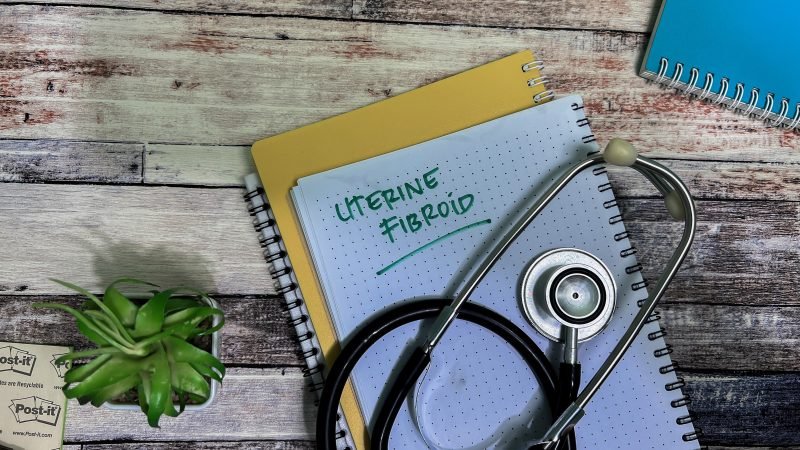Meher IVF : +91-87790 34242 | +91-83699 15880
Can You Get Pregnant After Fibroid Removal? A Gynecologist Explains

Uterine fibroids are one of the most common gynecological conditions in women of reproductive age. These noncancerous growths in the uterus can vary in size and number, and while some fibroids cause no symptoms, others can lead to heavy menstrual bleeding, pelvic pain, or even fertility issues.
At Meher-Ambe in Mulund, our experienced gynecologists frequently meet women who are concerned about whether fibroids and their removal will affect their ability to conceive. The good news is that many women can successfully become pregnant after fibroid removal, especially with the right treatment plan and expert medical guidance.
How Fibroids Can Affect Fertility
Many women can get pregnant after fibroid removal (myomectomy). Chances depend on fibroid type, size, location, other fertility factors and the type/extent of surgery. Removing submucosal fibroids or large cavity‑distorting intramural fibroids often improves fertility; some treatments (e.g., uterine artery embolization) are not recommended when fertility is desired.
Fibroids can impact fertility in several ways, depending on their size and location:
🔹 Submucosal (protrude into the uterine cavity): most likely to impair implantation and cause miscarriage—removal usually improves pregnancy rates.
🔹Intramural (within the uterine wall): may reduce fertility if large (>~4 cm) or if they distort the endometrial cavity; small intramural fibroids often have little effect.
🔹Subserosal (on the outer surface): Usually do not impair fertility unless very large or cause distortion/adhesions.
🔹Indirect effects: alter uterine contractility, impede sperm/embryo transport, change blood flow to the endometrium, and cause cavity distortion or adhesions.
Not every woman with fibroids will experience fertility problems, but for those who do, removal of the fibroids can significantly improve the chances of natural conception or success with assisted reproductive techniques like IVF.
Fibroid Removal Options at Meher IVF Center
The main fertility-preserving surgical procedure for fibroids is myomectomy. At Meher-Ambe in Mulund, our gynecologists choose the most suitable method based on the size, number, and location of your fibroids:
🔹 Hysteroscopic myomectomy: removal of submucosal fibroids through the cervix (no abdominal incision). Best for cavity‑distorting lesions; fastest recovery and least impact on uterine wall. Generally preferred when fertility is desired.
🔹 Open (abdominal) myomectomy (laparotomy): used for very large or numerous fibroids or when more complex reconstruction is needed. Good for complete removal but longer recovery and potentially more adhesions.
🔹 Laparoscopic or robotic myomectomy: minimally invasive abdominal approach for intramural or subserosal fibroids. Faster recovery and usually fewer adhesions vs open surgery; requires careful multilayer uterine repair when the cavity is entered.
🔹Uterine artery embolization (UAE): blocks fibroid blood supply. Effective for symptoms but associated with reduced ovarian reserve, higher miscarriage and adverse pregnancy outcomes; generally not recommended if future fertility is a priority.
🔹MR‑guided focused ultrasound (MRgFUS) and medical therapy (GnRH analogues, ulipristal in some regions): limited or temporary fertility benefits; evidence is less strong for fertility preservation.
When to remove fibroids for fertility
🔹Strong indication: submucosal fibroids (symptomatic or asymptomatic) — remove to improve chances of conception and reduce miscarriage.
🔹Consider removal: intramural fibroids that distort the cavity or are large (>~4 cm), or when other causes have been excluded and fibroids are the suspected cause.
🔹Often unnecessary: small intramural or subserosal fibroids not distorting the cavity.
Pregnancy After Fibroid Removal – What to Expect, Timing to attempt pregnancy after myomectomy
🔹 After hysteroscopic myomectomy: many clinicians allow attempts after 1–2 menstrual cycles, depending on healing and scarring risk (follow surgeon advice).
🔹After abdominal or laparoscopic myomectomy: commonly advised to wait about 3 months to allow myometrial healing; some recommend up to 6 months in extensive repairs. Individualize based on extent of repair and surgeon preference.
Pregnancy options after fibroid removal
🔹Natural conception: often successful after myomectomy, especially when cavity‑distorting fibroids were removed.
🔹Assisted reproduction (IUI/IVF): used when there are other fertility factors or if conception does not occur within an expected timeframe; IVF can be started after appropriate healing time and counseling.
🔹If fibroids recur: repeat myomectomy or alternative strategies may be considered; fertility‑preserving options prioritized when possible.
Risks and considerations for pregnancy after myomectomy
🔹Uterine rupture: rare but possible in pregnancy/labor after myomectomy, especially with full‑thickness deep myometrial incisions. Mode of delivery (trial of labor vs elective cesarean) is individualized based on incision type, extent of repair and obstetric assessment.
🔹Adhesions: surgery can create pelvic/uterine adhesions that impair fertility; minimally invasive approaches and adhesion‑barrier techniques may reduce this risk.
🔹Recurrence: fibroids can recur over time; recurrence risk higher in younger women.
🔹Obstetric risks (with prior fibroids or myomectomy): slightly higher rates of miscarriage, preterm birth, malpresentation, placenta previa/abruption and postpartum hemorrhage — many pregnancies are uncomplicated, but monitoring is required.
🔹Surgical risks: bleeding, infection, need for transfusion, and—rarely—hysterectomy if complications occur.
Counseling points / practical steps
🔹Tailor decisions to age, fertility goals, fibroid type/location, symptoms and other fertility factors (partner factors, ovarian reserve).
🔹If infertility is the issue, evaluate other causes (ovulation, tubal patency, male factor) before or alongside fibroid surgery.
🔹Discuss alternatives (UAE, medical therapy) but note fertility implications.
🔹Plan timing for conception after surgery and consider early referral to reproductive endocrinology if age or other factors limit time.
🔹Ask your gynecologic surgeon about the likely incision depth, repair layers, adhesion‑prevention measures, and recommended timing/route of delivery for future pregnancy
Regular follow-ups at Meher-Ambe in Mulund allow us to monitor your uterine health and provide timely intervention if needed.
The Meher-Ambe Advantage
At Meher-Ambe, our gynecologists and fertility specialists combine advanced surgical skills with comprehensive reproductive care. We focus not only on removing fibroids but also on creating the best possible conditions for a healthy pregnancy whether you’re trying naturally or through IVF.
Yes you can get pregnant after fibroid removal. With expert care at Meher-Ambe in Mulund, many women achieve successful pregnancies and healthy deliveries. Early diagnosis, the right surgical approach, and a personalized fertility plan are the keys to success.s

